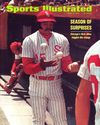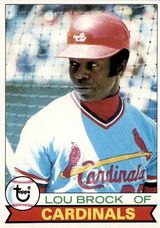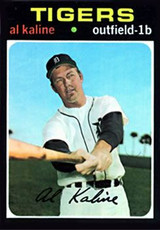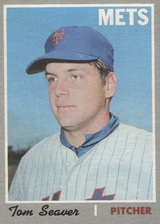The Boys of Summers Past #1
For years now I have watched as the baseball heroes of my youth are called up to the big sandlot in the sky. Life’s “general manager” is forever turning over its roster. The pace of this turnover seems to have accelerated this year. Six of baseball’s greatest have left the field in 2020 (so far). These were Hall-of-Famers, and therefore, baseball immortals. Long may their memories live! Five of them were once inhabitants of the treasure chests I kept stored under my bed. These chests may have looked like ordinary shoeboxes, but to me the they were filled with gold.
I am not the baseball fan I was as a kid, when after a short time as a fan of a team in the far off and exotic city of St Louis, Missouri, I came “home” to my dad’s team, the Los Angeles Dodgers. I bled Dodger Blue in those days, and looking at baseball cards online (mine are long gone)[1] can still get my blue blood pumping. None of these HOFers were Dodgers, but they were and are among my favorite players of all time.
In this post and a follow-up where I highlight some of my favorites who have died in 2020, but who were not Hall-of-Famers, I will try try to share some of my personal recollections along with their career highlights of players who—in contrast to today’s stars—used to walk miles through waste-deep snow to and from stadiums, uphill both ways. You will soon see that I got carried away.
From shoeboxes to Cooperstown
Before I became a Dodgers fan, I was a St Louis Cardinals fan. Why? Undoubtedly because they played in both the 1967 and 1968 World Series. I probably watched parts of both. If so, they were probably my first as a very young fan of seven and eight years old. Lou Brock was one of my first favorite players. I’ve been a fan of his ever since, but not so the Cardinals. On October 7, 1969 the team broke my little heart (and, ultimately, the “reserve clause”). I will have to relegate that story to a footnote, as it strays too from my subject here.[2]
Speaking of trades, Brock was in a doozy in 1964. The always hapless Cubs gave up on him barely two months into his third season and dealt him the for pitcher Ernie Broglio, who won just seven games in two seasons games for them before retiring. Brock hit .348 and led a resurgent Cardinals past the Cubs in the standings that summer, into the playoffs, and on to a World Series victory that fall. The Cards played in three World Series—winning two—in Brock’s first five seasons with the team. The Cubs hadn’t won a Series since 1904. They blamed that on a goat! The term “Brock for Broglio” has its own Wikipedia page.
Lou Brock went on to collect over 3000 hits and batted. 293 for his career. When he retired he held the single-season and career records for stolen bases. He hit .391 in the World Series, the highest of any player appearing in at least 20 games. He was selected to six All Star teams, received MVP votes in ten seasons, won numerous humanitarian awards, and was a first-ballot Hall-of-Famer.
One of the greatest competitors to ever toe the rubber, Bob Gibson was intimidating. Henry Aaron said that he was the only pitcher he ever feared. I doubt Aaron was alone in that regard. The Associated Press quoted Aaron’s advice to a young Dusty Baker:
“Don’t dig in against Bob Gibson; he’ll knock you down,” Aaron said, according to the Boston Globe. “He’d knock down his own grandmother if she dared to challenge him. Don’t stare at him, don’t smile at him, don’t talk to him. He doesn’t like it. If you happen to hit a home run, don’t run too slow, don’t run too fast. If you happen to want to celebrate, get in the tunnel first. And if he hits you, don’t charge the mound, because he’s a Gold Glove boxer.”
Solly Hemus was his first manager in the big leagues and didn’t want Gibson on his team. He once told the future HOFer and the soon-to-be All Star Curt Flood that they would not make it as major leaguers and should try something else.[3] Gibson said the man was racist, and it is easy to believe it (as far as I know, he wasn’t blind). It was Hemus, not Gibson or Flood, who was soon out of a job.
The Cardinals’ opener in 1968 was delayed by a day in deference to the funeral of Dr Martin Luther King, who had been murdered five days earlier. Gibson was a great admirer of Dr King and started the game. He pitched seven innings of 3-hit ball and allowed a single unearned run, but did not get the decision. He would go on to set a record that year that—it’s been said before—is unlikely to be broken: for the season, in over 300 innings pitched, he recorded a 1.12 ERA. One point flipping one two! He won the National League’s Cy Young and MVP awards. Major League Baseball lowered the mound six inches before the start of the following season after what is known as “The Year of the Pitcher.”
Gibson retired after the 1975 season with a host of accomplishments: 251 wins, 3117 strikeouts, 2.91 ERA, two Cy Youngs, an MVP, eight Gold Gloves, and more. He played basketball at Creighton University, and for one year with the Harlem Globetrotters. Gibson was the first black pitcher elected to the Hall of Fame. He was elected in his first year of eligibility.
I was a National League fan as a kid. Only after my move to Minnesota in 1995 did I follow the junior circuit (ha!) closely. This because of the availability, for the first time in my life, of major league games in a venue within easy driving distance (11 minutes). It wasn’t much of a venue, the “Humptydome,” but tickets were cheap and plentiful, and my daughters and I enjoyed the then bottom-feeding Twins.[4]
So I knew Al Kaline mostly from baseball cards. He was probably retired by the time I’d subscribed to The Sporting News, (then) a baseball-centric weekly. I’m sure I saw him play occasionally on the Saturday “Game of the Week,” the only televised baseball I saw until my parents ponied up for cable TV in the mid-to-late ’70s, and I must have seen Kaline’s Tigers defeat my St Louis Cardinals in the 1968 Series.
A perusal of Kaline’s stats shows what a fine player he was. Highlights include his batting championship in 1955 as a 20-year-old, ten Gold Gloves, 15 All Star selections, 399 homers, 3007 hits, and career .297 average. Though he never won an MVP award, he got votes in 14 different seasons (including 12 of 13 years from ages 20-32), finishing in the top ten nine times. He played his entire 22-year career for Detroit.
I remember reading that “Mr Tiger” would sign his autograph “Al K——,” but I don’t find examples online. He was a first-ballot HOFer and is probably the only player in the Hall whose first and last names, mashed together, form a word playable in Scrabble. Read his Wikipedia page to learn how his teammate Willie Horton saved his life on the field during a game.
Although the trade that brought Morgan to the Reds wasn’t quite the heist that Brock for Broglio was, it was big for Cincinnati.[5] Joe made the Big Red Machine go. In the eight seasons following the trade (1972-79, all with the Reds) “Little Joe” was big: eight All Star selections, two MVP awards, five Gold Gloves, and he scored an average of 102 runs per year. More important still, the Reds played in three World Series and won two over that span.
I met Joe Morgan in the Minneapolis/St Paul airport sometime in the late 1990s. I had just visited a friend at his gate[6] for the twenty minutes or so he had between flights when I saw Morgan. He was probably between flights as well when I accosted him. Well, I hope I didn’t really accost him, but I’m sure he couldn’t have been thrilled with the intrusion. But he was friendly and shook my hand even after I told him that I was a fan of the Reds’ 1970s rival Dodgers. I also told him how much I admired him and that he was always my favorite Reds player.
I might not have approached him—let alone accost him—and I wouldn’t have admitted to liking anything from Los Angeles if I had been aware of this (lifted from Wikipedia):
In March 1988, while transiting through Los Angeles International Airport, Morgan was violently thrown to the floor, handcuffed, and arrested by Los Angeles Police Department (LAPD) detectives who profiled him as a drug courier. He subsequently launched and won a civil rights case against the LAPD in 1991, and was awarded $540,000. In 1993, a federal court upheld his claim that his civil rights had been violated
Morgan was a first-ballot Hall-of-Famer and is considered, with Eddie Collins and Rogers Hornsby, one of the best second baseman to ever play the game.
Despite his having played through the height of my baseball fandom, I had forgotten how good “Tom Terrific” really was. Oh, I knew about his leading the Mets out of their “Throneberry” years as a motley collection of pinstriped clowns to an improbable “Amazing Mets” World Series title in 1969. But his statistics are eye-popping. His performance over the period from his rookie year of 1967 at age 22 through the 1977 season matches up favorably with any such stretch by the greatest pitchers of the game. Certainly he was the dominant pitcher of the decade following the lowering of the mound after the ’68 season.
I never met Seaver in an airport or anywhere else. However, I do have a close encounter of a sort. One that only I would consider a badge of honor. Sometime during my 6th grade year (1971/72) I became a legend in my own mind by becoming the first and probably only student to get back-to-back swats from rookie teacher Mr Ayala’s solid oak, aerodynamically advanced paddle. They stung, but I did not cry.[7]
Now what, you may be thinking, does a well-deserved paddling have to do with Tom Seaver? Just this: Mr Ayala had faced Seaver while both played semipro baseball in Alaska. I don’t remember if the teacher ever told us how he had fared against the future HOFer, but if I were to judge based on the strength of his swats, I’m guessing he took him deep. Ouch!
Seaver was selected to 12 All Star games, won the Rookie of the Year award, three Cy Young awards, and pitched a no-hitter. He won 311 games while losing only 205, accumulated 3640 strikeouts, 61 shutouts, and compiled a 2.86 ERA. He was a first-ballot HOFer and was elected with 98.8% of the vote, which was a record at the time.
One before my time
♦ Whitey Ford was a Hall of Fame lefty, and the greatest-ever Yankee pitcher. According to Wikipedia, Ford was known to doctor the ball a bit. In San Francisco for the 1961 All Star Game, Ford and Mickey Mantle racked up over a grand in purchases at Giant owner Horace Stoneham’s country club. Stoneham promised to pay the tab if Ford could strike out Mays in the game. He did. Later Mays asked, “What was that all about?” To which Ford replied, “I’m sorry, Willie, but I had to throw you a spitter.” After he retired, the lefty admitted to the various ways he cheated on the mound, but insisted he hadn’t in his 25-4 Cy Young season of 1961. He didn’t want anyone to “get any ideas and take [the award] away.” Ford’s superlatives are too numerous to recount here. Read his Baseball-Reference and Wikipedia pages for much more (both are linked in this paragraph). He pitched from 1950-1967, all for the Yankees, and all before my time (I was seven when he retired).
See also The Boys of Summers Past #2.
—
Notes
-
I sold all of my baseball cards for $1500 in 1980 to pay for diapers and baby “formula.” I’ve never regretted that, and I haven’t missed them. My dad has said many times that he and my mom would have given me money if I needed it and, if I wouldn’t accept that, would’ve bought them from me. It was more important to me to stand on my own two feet. And, as I say, I’ve not missed them. (Their images have been available online for awhile now, and I scratch the occasional itch to see them that way. I’m scratching now.) [^]
-
Yesterday I asked Mom if she remembers this. She remembers the names Tim McCarver and Curt Flood, but not telling me about the trade or my reaction. It’s more likely that I read about the trade in the paper, and told her about it. I doubt I shed real tears, but I was devastated. As I wrote above, I became a Dodgers fan that day. Only when we moved from that home ~six years later did I scrape the Cardinals decal from my bedroom window.
 In a bit of odd 9-year-old logic, I anointed the player the Cardinals received in that trade, Dick “Don’t call me Richie” Allen, my new favorite player even as I loathed his new team. My logic must’ve been, “he must be a pretty good player for the Cards to trade those guys for him.” Whatever I thought, when the Dodgers traded for him a year later, I rejoiced that my favorite player had been traded to my favorite team! (Probably he—briefly—became my favorite player that very day and I backdated his beatification in my mind.)
In a bit of odd 9-year-old logic, I anointed the player the Cardinals received in that trade, Dick “Don’t call me Richie” Allen, my new favorite player even as I loathed his new team. My logic must’ve been, “he must be a pretty good player for the Cards to trade those guys for him.” Whatever I thought, when the Dodgers traded for him a year later, I rejoiced that my favorite player had been traded to my favorite team! (Probably he—briefly—became my favorite player that very day and I backdated his beatification in my mind.)Dick Allen was a good hitter with a “bad guy” reputation (aside to my daughters: think Albert “Don’t call me Joey” Belle). He was once photographed for the cover of Sports Illustrated on the steps of a dugout with—gasp!—a cigarette in his mouth. Scandalous! He lasted one year with Dodgers before being traded to the Chicago White Sox for Tommy John. (Click on image for a better view.) [^]
-
Solus’s statement to Gibson and Flood is from Gibson’s Wikipedia page. The 2017 book One Nation Under Baseball: How the 1960s Collided with the National Pastime by John Florio and Ouisie Shapiro says about the execrable Hemus, “Aside from calling Gibson and other black players “n*****s” as a motivating tool, the thirty-six-year-old Hemus told the young Gibson he wasn’t big-league material. He even suggested that going over opposing hitters was beyond his intellectual scope.” [^]
-
I probably saw more of the American League than I remember. The NBC Game of the Week broadcast team of Tony Kubek (ex-Yankee shortstop) and Joe Garagiola (childhood friend of Yogi Berra who reminded viewers of that fact every other inning) seemed to call most of their games from Yankee Stadium or Fenway Park. [^]
-
The Reds sent Lee May, second baseman Tommy Helms, and outfielder Jimmy Stewart (not that one) to the Astros. The Reds received Joe Morgan, Cesar Geronimo, starting pitcher Jack Billingham, infielder Denis Menke, and outfielder Ed Armbrister. While May and Helms found the Astrodome less than welcoming, all five players the Reds added were contributors to their 70s success. [^]
-
Yes, it was possible to for non-passengers to meet travelers—and HOF second basemen—at their gates in airports way back in the 20th century. The friend I met that day was Mike S, a Navy pal. We bonded in the fall of 1980, when we watched the Phillies-Royals World Series on his 8” portable TV in a barracks room in Norfolk, Virginia. [^]
-
You may also wonder about my crime. Just what did I do to earn two swats from Mr Ayala’s paddle? My infraction was climbing atop a desk so I could see out of a window and narrate for my classmates Mr Ayala’s swat to the west end of an east-facing G—. My narration was garnering great reviews from my audience, particularly as I related with glee that G— was crying. Unfortunately for my skinny 11-year-old keister, Mr Ayala looked up (who could have anticipated that?), and I believe I could see the steam escaping from his ears.
Soon, I was the kid bending over, grabbing his ankles, and bracing for a blow from the ex-first baseman’s paddle. Which, astoundingly, became a hall-of-adolescent-fame-worthy two blows. But let me repeat: I did not cry! [^]





